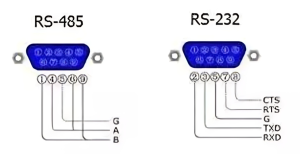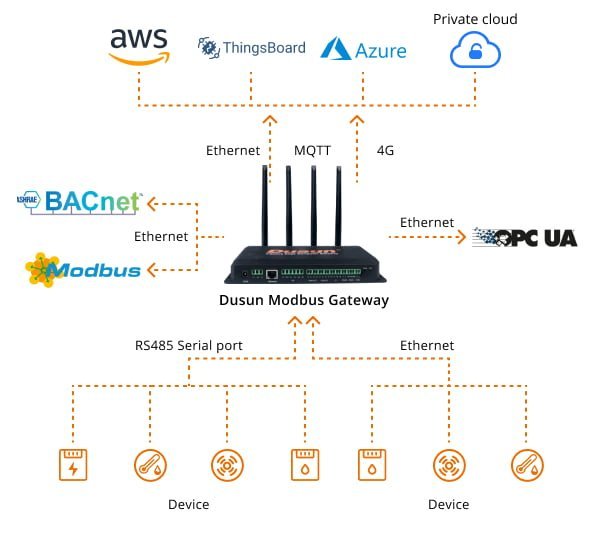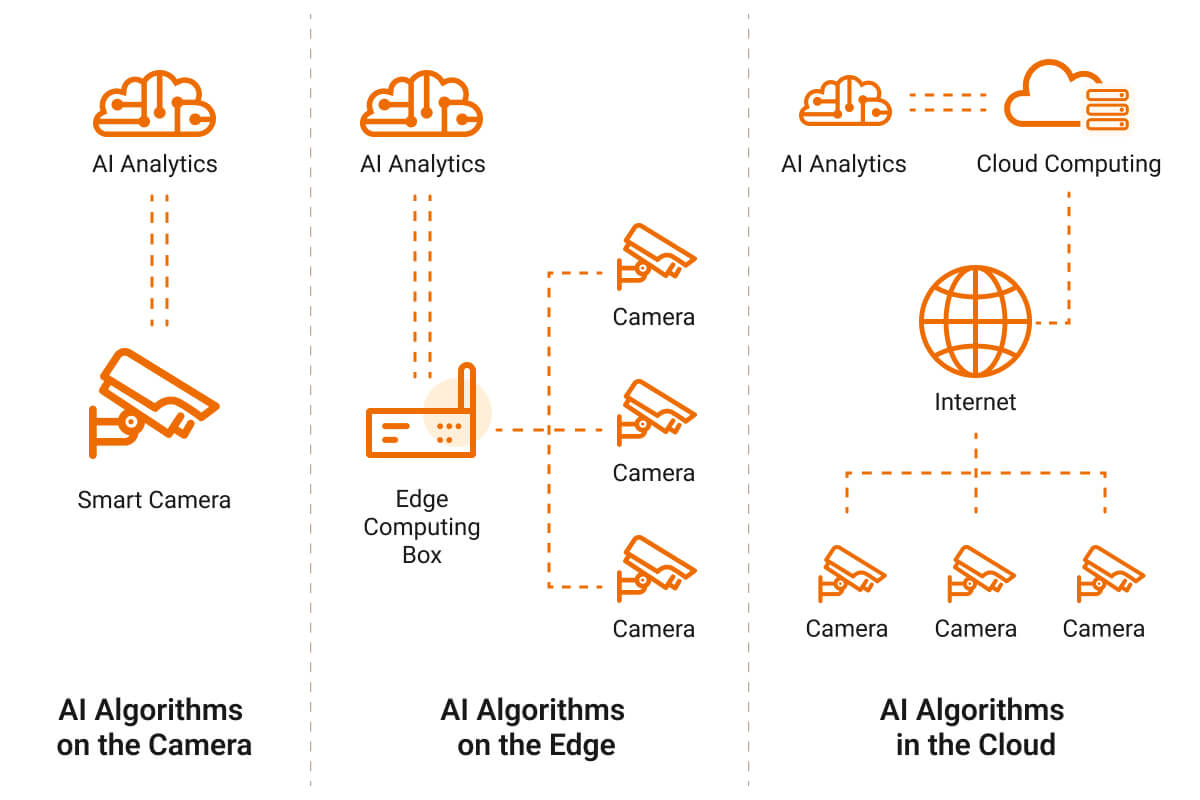RS485 is a hardware architecture that specifies the electrical properties or characteristics of transmitters and receivers. This architecture is critical in serial communication systems, where data transmission and reception occur continuously bit by bit.
The RS485 hardware architecture is widely used in industrial control and automation systems because of several benefits, key among them being immune to noise. Let’s analyze this communication standard in detail to understand its features, tools, applications, and how it works.
What Is RS485?
Also known as EIA-485 or TIA-485, RS485 is a standard interface for physical communication, where the data exchange occurs in serial. This standard operates in the physical layer of the OSI model and allows multiple devices to communicate across long distances using a single pair of twisted wires. It can also use four wires, but most installations use two wires to enable cheap, multipoint communication. More on that later.
RS485 is an improvement over RS232 because it expands the physical functionality of the interface. For instance, it uses differential signaling to reduce interference when transmitting data over long distances. This differential signaling cancels out noise, making the signal transmission more reliable.

In most cases, RS485 is used as the basis for communication and automation protocols, such as ASCII and Modbus. These protocols have a central control system with slaves, creating a network with multiple devices.
RS485 Features and Specifications
| Property | Value |
| Voltage System | Differential |
| Allowable Signal Voltage Range | 0V to 5V |
| Maximum Driver Output Voltage | -7V to +12V |
| Receiver Input Voltage Range | -7V to +12V |
| Receiver Input Resistance | 12kΩ |
| Receiver Sensitivity | +/-200mV |
| Total Drivers and Receivers (On One Line) | 32 drivers and 32 receivers, but only supports 1 active driver at a time |
| Duplex Mode | Half or full duplex |
| Line Configuration | Multidrop |
| Max Operational Distance | 3000 feet (1200 meters) |
| Max Data Transmission Rate | 10 Mbps |
How RS485 Works
At its transmission core, RS485 can either operate in half or full duplex mode.
2-Wire (Half Duplex)
In half duplex mode, the RS485 architecture uses 2 wires, where the TX (transmitted signal) and RX (received signal) indicate the respective signal being sent and received.
Therefore, this setup can send data in both directions, but only one at a time. Since TX and RX share the transmission medium, simultaneous bidirectional communication is impossible, hence the half-duplex mode.
4-Wire (Full Duplex)
Full duplex improves the half duplex design by adding 2 more wires, giving TX and RX two wires each for transmitting data. This setup allows simultaneous bidirectional communication between the connected devices, making the data exchange more efficient and concurrent.

Protocol implementations built on RS485, such as Modbus, can use either half or full-duplex communication. Gateways like the CDGW-006 Modbus RTU feature two RS485 ports to support smart manufacturing and automation via Modbus using half or full-duplex communication.
It is important to note that these two modes only refer to the data communication channels. Each has an additional common reference connection wire shared across all devices. This line ensures the maximum common-mode voltage rating for each connected device is not exceeded. Therefore, half-duplex modes have three wires while full-duplex modes have five wires.
RS485 Tools
Hardware
Transceiver
Transceivers are transmitters and receivers packaged as one. These devices are the basic building blocks of RS485 networks because they convert TTL signals to and from the transmission differential signals.
Repeater
Although RS485 has a relatively long operational distance, you can extend the network’s maximum cable length by incorporating a repeater, which regenerates the weak differential signal.
Terminator
Terminators sit at each end of the network line to absorb reflections that have occurred during transmission, ensuring there’s signal integrity. They do so by matching the natural impedance of the bus.
Converter
Converters are not necessary in the network but are a must if you want to convert RS485 to other serial communication standards, such as USB, ethernet, or RS232.
For instance, the CDGW-006 Fieldbus RS485/232 gateway converter connects industrial detectors/sensors via RS485/232 interfaces, while supporting various field bus protocols. It has a USB port to convert the serial communication.
The DSGW-081 Modbus Gateway has richer interfaces, introducing CAN, I/O, and various wireless protocols like ZigBee, Z-Wave, and Bluetooth.

Isolator
As the name suggests, these devices electrically isolate devices on the network to protect them from ground loops and electrical hazards.
Other hardware tools include:
- Data logger: Records RS485 data streams from the network devices
- Splitter: Creates a star RS485 network topology by splitting one port into several interfaces to connect to slaves (usually sensors)
- Sensor: These are basically sensors with RS485 port interfaces
Software
Analyzer
This software monitors and analyzes data traffic on the network, enabling you to troubleshoot communication issues and verify the integrity of the data.
Configuration Software
Configures the parameters of the RS485 devices, which include the error checking settings, address, and baud rate.
Protocol Analyzer
Protocol analyzers analyze and optimize RS485 field bus connections. They gather info about every line change to decode and display the specific protocol in use on the network. This information helps to debug and understand the communication flow.
Communication Libraries
These pre-built functions make it easier to write code that communicates with the various RS485 devices in the network using different programming languages.
Other Important Tools
Protocol Sniffer
These non-intrusive devices capture and display all the network’s data traffic regardless of the protocol used, and they can send the captured data to a remote logging station.
Oscilloscope
Oscilloscopes are diagnostic tools that enable you to check the electrical properties of the network, which helps to detect signal integrity issues.
Multimeter
Multimeters measure the current and voltage on the RS485 network, making it possible to spot wiring issues, such as cuts and shorts.
Advantages of RS485 Communication
Long Transmission Distance
With a maximum communication distance of 1200 meters (1.2 kilometers), RS485 is better off than other serial communication standards like USB (100 meters), ethernet (100 meters), and RS232 (300 meters). This property makes it ideal for control applications over a wide area.
Immunity/Tolerance to Noise
The balanced differential voltage transmission design in RS485 networks is more immune to interference and common-mode noise. This makes it a viable cabling option in industry/factory settings, where there is a lot of electrical noise.
Multi-Drop Capability
RS485 can connect up to 32 slaves on the same communication line, which simplifies wiring and makes cabling cost-effective, especially in half-duplex mode. This wiring is ideal for Supervisory Control & Data Acquisition (SCADA) systems, where users want remote or on-site control and data gathering from multiple devices on the network.
Operates in Both Half and Full-Duplex Modes
RS485 can operate in both half and full duplex modes, so it is flexible enough to accommodate the communication requirements of different applications.
Simple Wiring
Most RS485 implementations, such as the Modbus protocol, use the 2-wire (twisted pair) half-duplex mode that simplifies wiring installation and maintenance.
Low Cost
The hardware and wiring simplicity of this architecture makes it cost-effective to purchase the cables, install them, and maintain the network. Also, it can handle long-distance transmission, reducing the need for multiple repeaters.
Wide Compatibility
RS485 is well-established and widely adopted by hardware vendors, so there are multiple sensors, communication modules, and controllers that are compatible with the standard in the market.
Ideal for Multi-Vendor Environments
Since multiple vendors have adopted this standard, their devices are interoperable, which makes it easy to build or upgrade control systems that suit your budget and requirements.
Real-World Applications of RS485 Communication
Industrial Automation
RS485 is commonly used on factory and industry floors because it is immune to noise. The standard provides connectivity between programmable logic controllers (that act as masters in the network) with sensors, actuators, and other slave devices.
Control protocols like Modbus use this standard as its physical layer implementation to allow control and automation of factory equipment.
Multi-Drop Networks
This standard supports multi-drop network topologies with up to 32 devices linked to a single bus. The setup is better than point-to-point connections because it reduces installation costs and simplifies wiring.
Aviation
Commercial aircraft use RS485 for low-speed data communication because it requires fewer wires and hardware, making the plane lighter.
Access Control Systems
Card readers and access control panels in security systems usually use RS485 due to its multi-drop capability. This topology allows multiple access control devices to use a shared communication line.
Long Distance Communication
Networks with geographically dispersed devices, such as in large factories and assembly plants, benefit immensely from the 1.2 km max transmission distance provided by RS485. The standard can support this long-distance communication at a 9.6 kbps baud rate.
Solar Power Systems
Solar power systems, such as inverters, monitoring devices, and charge controllers generate tons of electrical noise. The external environment where the system is installed is also susceptible to noise, but RS485 suppresses this interference to enable reliable signal transmission.
Other applications include:
- Robotics
- Motor drives
- Computer systems (controller to disk drive)
- Base stations
- Video surveillance systems
- Light controllers in performance venues
- Automotive (Modbus gateways integrate easily with common standards in the auto industry, such as CAN and PROFINET)
- Building automation
- HVAC systems
Wrap Up
The RS485 communication standard is not new, but it has managed to remain relevant in the market because it is adaptable to suit various applications, robust, reliable, and supports long-distance communication.
If you need gateways that implement this standard to develop industrial control systems or any other applications, we have several Modbus gateways you can check out. These devices support transmission conversion between Modbus TCP, RTU, and ASCII to maximize compatibility with all hardware interfaces, while providing data security and secure remote access control down to the end node.
We also provide ODM services if you need full hardware customization of the Modbus gateway. Contact us with your RS485 Modbus requirements, and we’ll discuss the best way forward.
FAQs
Is RS485 Same As Ethernet?
No. RS485 has different wiring configurations and signaling methods compared to ethernet. Ethernet also uses twisted pair cables, but cat5 and cat6 cables have 4 twisted pairs, unlike 1 or 2 pairs in RS485. The transmission speeds are also faster in ethernet. But RS485 has a longer transmission distance, allows multi-drop communication, and is more resistant to interference.
How Do I Identify RS485 Cables?
Half duplex buses are more common, and the first identifier is the single twisted pair of wires (D- and D+). When transmitting a logic 0, D- will be high and D+ will be low. But when transmitting a logic 1, D- will be low and D+ will be high. You can measure the voltage across these lines to determine D- and D+ as a device sends 0s or 1s.
What Is the Difference Between RS232 and RS485?
The major difference is that RS232 is full duplex, while RS485 can be half or full duplex. Therefore, RS232 has more wires that even exceed the 4 for RS485 full duplex communication. Most have 9 wires, but some can even have 25. Despite having more wires, the transmission speed and distance in RS232 is lower than in RS485. The recommended voltage is also different (+12V to -12V in RS232 and +5V to 0V in RS485).
How Many Devices Can Be Connected to RS485?
The theoretical limit is 256 devices, but this is only possible at 1/8th of the load of each one. To ensure a full load, the maximum recommended number is 32 devices.


















